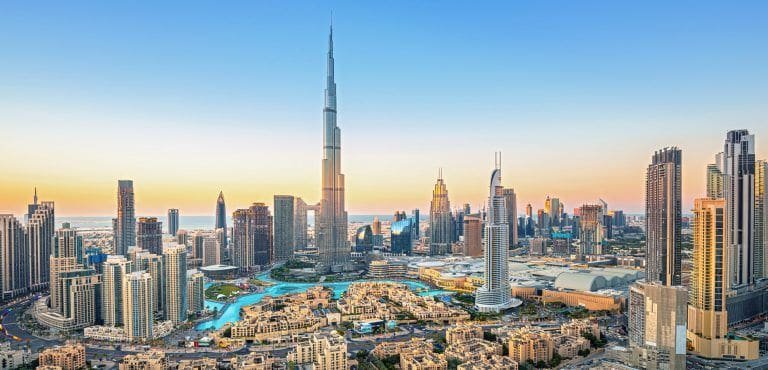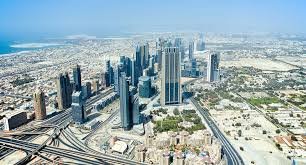
When it comes to buying an off-plan property, one factor consistently stands above all others—location. Whether you’re a first-time buyer or a seasoned investor, where your property is situated determines not just its initial price but also its long-term appreciation, rental demand, and lifestyle appeal.
In Dubai’s dynamic real estate landscape, location doesn’t merely refer to an address—it embodies convenience, prestige, connectivity, and potential growth. Understanding how location impacts off-plan property value can make the difference between a smart investment and a stagnant one.
Let’s explore why location is the cornerstone of real estate success and how it shapes the worth of off-plan projects in Dubai.
Real estate professionals often repeat the golden mantra: “Location, location, location.” This timeless truth holds especially strong for off-plan developments because these properties are investments in the future.
An ideal location ensures higher returns through:
When investors buy off-plan, they are essentially betting on how the area will evolve by the time the project completes. Hence, analyzing a location’s potential becomes a crucial step before committing to any purchase.
In a city like Dubai, where comfort and convenience define the lifestyle, accessibility plays a central role in determining a property’s value.
Properties that are strategically positioned near major highways, metro stations, airports, or business districts are in high demand. Connectivity reduces commute time, enhances work-life balance, and attracts professionals and families alike.
For instance, areas with direct links to Sheikh Zayed Road or Al Khail Road tend to experience higher occupancy rates and faster appreciation because they offer effortless access to key destinations like Downtown Dubai, DIFC, or Dubai Marina.
Even within communities, easy access to schools, supermarkets, healthcare centers, and recreational hubs can significantly influence buyer preferences. The easier it is to reach essential amenities, the higher the property’s long-term value.
Beyond infrastructure, the reputation of the neighborhood heavily shapes property perception and price. Certain communities in Dubai have built iconic identities that naturally command premium prices.
Take areas like Palm Jumeirah, Downtown Dubai, or Dubai Hills Estate—these locations are synonymous with luxury and exclusivity. On the other hand, emerging areas such as Dubai South or MBR City are becoming attractive for those seeking affordability combined with growth potential.
When evaluating an off-plan project, investors should assess the social and cultural environment the neighborhood promotes. Families prefer peaceful, community-oriented settings, while young professionals prioritize vibrant districts with nightlife, dining, and leisure options.
A location that aligns with its target demographic not only enjoys steady demand but also experiences consistent value appreciation.

Off-plan investors thrive on foresight. What differentiates an exceptional investment from an average one often lies in future infrastructure and urban planning.
Projects located near upcoming metro extensions, business districts, or landmark developments tend to gain immense value once these facilities are completed. Dubai’s government continuously invests in expanding public transport, roads, and green spaces, turning once-remote areas into bustling hubs.
When scouting for off-plan projects, always review:
A simple rule of thumb: where development leads, value follows.
Dubai’s status as a global business center means properties near commercial and financial zones command significant premiums.
Off-plan properties located near areas like Business Bay, Dubai Internet City, or DIFC benefit from proximity to employment opportunities, attracting a steady stream of tenants and professionals.
This proximity doesn’t just influence rental demand—it also boosts resale potential. Investors looking for higher occupancy rates often favor these districts because they appeal to a stable demographic of executives, entrepreneurs, and expatriates seeking convenience.
Meanwhile, as new business zones such as Dubai South and Expo City gain traction, they are quickly becoming hotspots for forward-looking investors who recognize the value of early entry.
Modern homebuyers and tenants don’t just look for a property—they seek a lifestyle. Therefore, communities that provide integrated amenities tend to outperform those that lack them.
Key features that enhance location value include:
Developers who build projects within or near such communities ensure their properties hold stronger long-term appeal. In Dubai, master-planned communities like Arabian Ranches, Tilal Al Ghaf, and Dubai Hills Estate exemplify this trend—each designed to offer everything residents need within minutes.
One of Dubai’s biggest real estate advantages lies in its scenic and waterfront developments. Properties with ocean, lake, or skyline views consistently fetch higher prices and faster appreciation.
Waterfront areas such as Dubai Marina, Bluewaters Island, and Creek Harbour showcase how scenic value enhances desirability. Even within inland communities, developers are now incorporating artificial lagoons, golf courses, and green spaces to replicate that premium feel.
Visual appeal doesn’t just attract luxury buyers—it also ensures better rental performance, particularly in short-term leasing markets driven by tourism.
In Dubai, proximity to major landmarks often translates into prestige and profitability. Areas surrounding Burj Khalifa, Dubai Mall, or Palm Jumeirah continue to enjoy sustained demand because of their global recognition and tourism appeal.
Off-plan investors can benefit immensely by identifying projects located near future attractions or entertainment zones. As tourism continues to thrive, properties close to these destinations will always hold competitive advantages—both in value and visibility.
While glamour and connectivity dominate headlines, everyday livability factors like safety, cleanliness, and urban planning also influence a property’s value.
Dubai consistently ranks among the world’s safest cities, but individual neighborhoods still vary in maintenance standards and traffic flow. A well-planned, low-congestion area with secure surroundings and pedestrian-friendly design enhances lifestyle quality, thereby increasing buyer and tenant interest.
Investors should observe how communities are managed—properties in well-maintained areas often see higher resale values and more stable rental returns.
Not all valuable investments lie in established neighborhoods. Some of Dubai’s most promising off-plan opportunities are in upcoming districts that combine affordability with future potential.
Areas such as Dubai South, Jumeirah Village Circle (JVC), and Al Furjan have become popular among first-time buyers and investors seeking long-term gains. As new infrastructure and community amenities develop, property values in these regions are expected to rise significantly.
Investors should focus on location growth potential rather than current prices. Buying early in a developing area often yields higher appreciation once the district matures.

Before signing on the dotted line for an off-plan property, conduct a location due diligence checklist:
By combining data with observation, investors can gauge not just the current but also the future value of a property’s location.
Ultimately, location determines how your investment performs over time. Even in a fluctuating market, prime or well-connected areas retain their value better than those in isolated or oversupplied zones.
An off-plan property in a strategic location offers:
This is why investors who prioritize location over short-term discounts often outperform those who chase temporary price advantages.
When investing in an off-plan property, remember that location is not just a factor—it’s the foundation.
A property can be renovated, upgraded, or redesigned, but its location is permanent. Whether you’re eyeing a luxury apartment in Downtown Dubai or a villa in an upcoming community, understanding how the surroundings influence value will guide you toward better decisions.
In Dubai’s ever-evolving skyline, new opportunities arise daily. Yet, the most successful investors share one habit—they look beyond the floor plan and focus on the map. Because in real estate, where you buy often matters more than what you buy.
Do Follow Estate Magazine on Instagram
